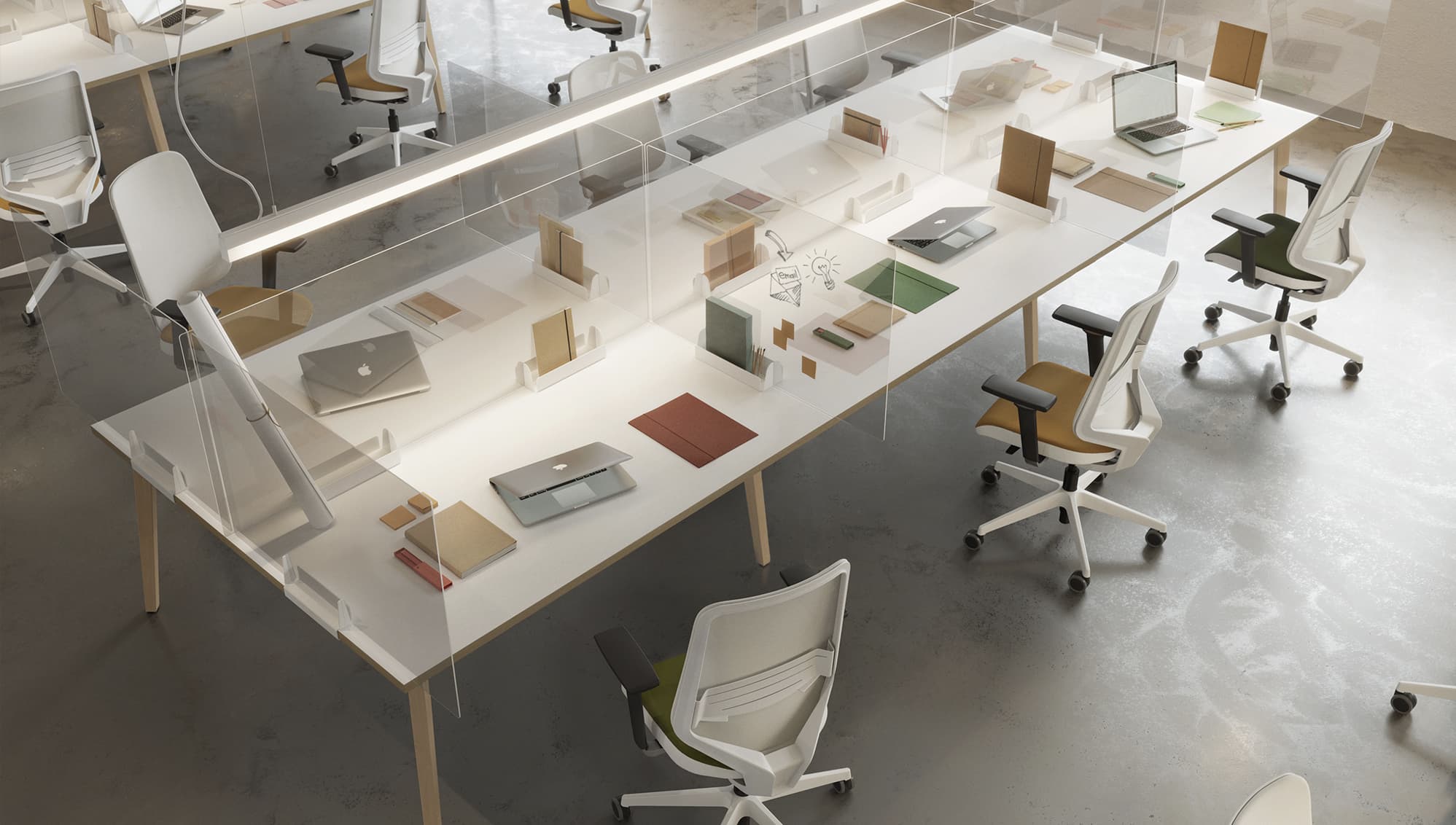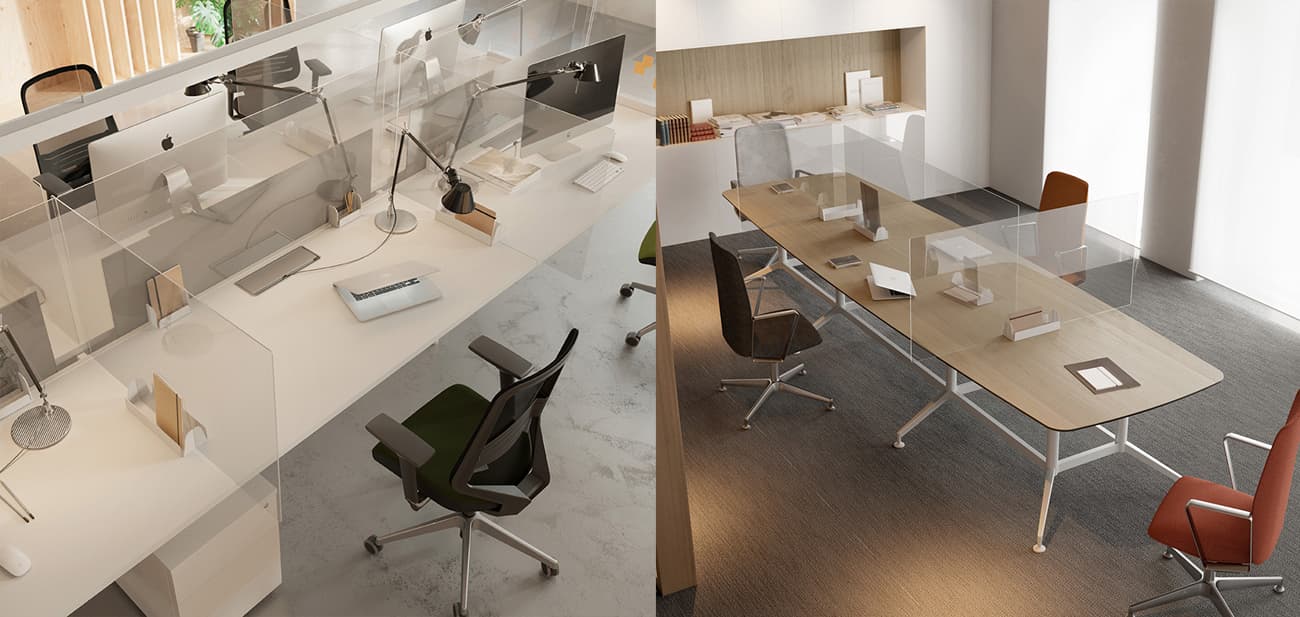
The office will be a meeting place
The current pandemic is one of those events that make the world rethink about ways of doing things. Many speak of “new normal” or “neo normal” because we all take it for granted when all this happens; things will never be the same. This disease has come to demonstrate to us our own fragility and the importance of prevention and health.
The work environment and the economy have stopped to decrease the spread of the virus resulting in many unknowns on how the return can happen. What is certain is that the’ post Covid office’ will have to change to provide more security for the users.
Governments internationally have called for teleworking to be promoted as a method of combating the virus. This way of working, which before had only been implemented by a few companies, is now accepted as essential either full or part time. It seems that teleworking will continue to be part of the labour mix in the future. It has additional benefits in the concentration and conciliation of staff, but it will not replace the traditional office because it also has insurmountable problems:
-Synergies of teamwork are reduced.
-It has direct repercussions on productivity in some areas.
-It can isolate the worker resulting in demotivation.

Telework and face-to-face work will coexist in the new post covid office
In addition, an occupational risk prevention law is needed to regulate the activity since most households are not equipped to carry out telework safely.
Experts foresee a mixed future where face-to-face work and telework coexist.
The office will become a meeting place, for sharing ideas and collaborative work. Tasks that require concentration and intimacy can be teleworked, but in these confined times, we have learned that group work increases the creativity of the company. Furthermore, this aspect enhances the worker’s sense of belonging to the group and, therefore, motivates and increases productivity. For this reason, meeting areas will be an important part of the office space. Of course, to avoid contagions and guarantee the distance between users, these rooms will be wider and the number of attendees at different meetings will be reduced. The density of employees per m2 will also be reduced.
At the morphological level, the office will also change to adapt to the new times. The companies that are preparing to return demand elements of isolation and social distancing and many are considering a redesign of their space. The new office will have more private spaces and the job tasks will be more distant from each other. Protective dividers between posts, work cabins, partitions and other physical barriers will be a constant as well as mobile and flexible furniture that allows the office to be adapted to the needs of the moment but in a safe way.
In companies where teleworking coexists with face-to-face work, less attendance and the alternation of work shifts may mean that the positions are not assigned to a specific person.
The redistribution of the jobs will also involve analyzing the routes to avoid infections and regulate the use of common areas such as dining rooms, elevators and stairs, recreation areas, vending machines, etc.
Many experts also talk about the use of easily disinfected materials and that we will live with gels, masks and temperature controls for a long time. In addition, non-touch devices will be preferred for opening doors, operating heating and air conditioners.
The post-Covid office will be, as we have been saying, a safer place that will provide more isolated spaces and roomier meeting areas and collaborative spaces. A more spacious, natural and human office is required where we can operate safely. The disease has taught us: we must protect ourselves in order to protect the others.
